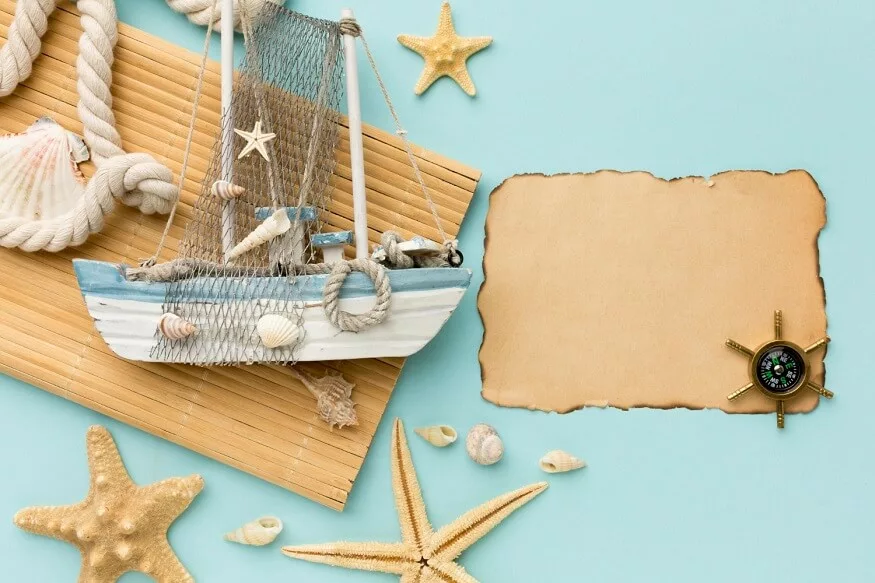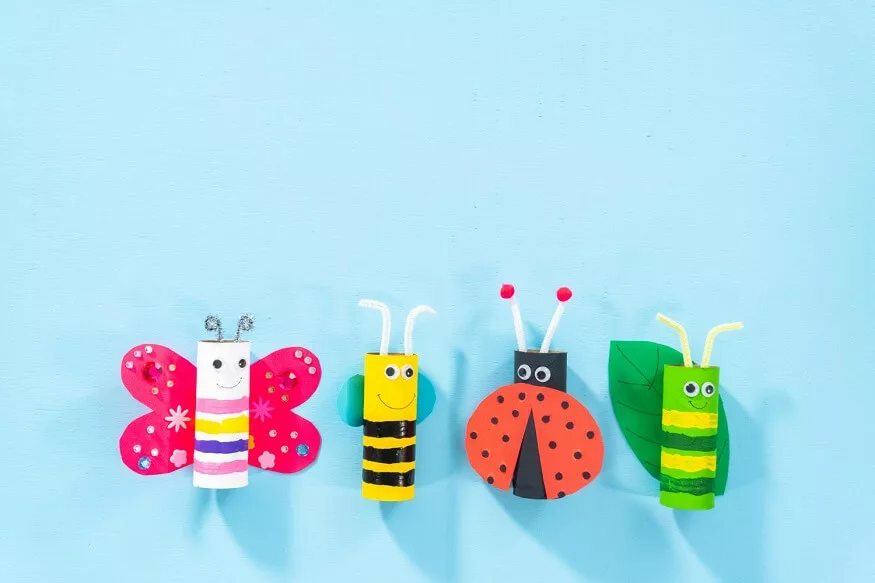The ocean, with its vastness and mysteries, has always captivated the human imagination. For children, it’s a world full of wonder waiting to be explored. In this journey of discovery, we dive deep into engaging activities, experiments, and crafts that not only entertain but also educate, creating an oceanic adventure right in the heart of your home or classroom. Let’s embark on a seafaring exploration tailored for inquisitive young minds.
Ocean-in-a-Bottle: A Liquid Seascape Adventure
Materials Needed
- Clear Plastic Bottle
- Water
- Blue Food Coloring
- Vegetable Oil
- Small Ocean-themed Toys (optional)
Activity Steps
- Fill the Bottle: Fill the plastic bottle about two-thirds full with water.
- Add Blue Hues: Drop a few blue food coloring drops into the water.
- Top with Oil: Pour vegetable oil on top of the water, leaving a small air gap.
- Seal the Bottle: Secure the bottle cap tightly.
- Shake and Observe: Shake the bottle to witness the creation of an ocean-in-a-bottle, with oil mimicking ocean waves and water representing the sea.
Learning Elements
- Density Exploration: Children observe the separation of oil and water due to their different densities.
- Visual Representation: Provides a visual representation of ocean layers.
Seashell Sorting: A Beachcomber’s Treasure Hunt
Materials Needed
- Various Seashells
- Small Containers or Bowls
- Large Tray or Bin
Activity Steps
- Collect Seashells: Gather an assortment of seashells.
- Sort by Characteristics: Encourage children to sort the shells based on size, colour, or type.
- Count and Categorise: Incorporate counting by counting the shells in each category.
Learning Elements
- Fine Motor Skills: Sorting and handling seashells enhances fine motor skills.
- Categorisation Skills: Promotes early mathematical concepts through categorization and counting.
Also Read: Science Experiments Every Primary Student Should Know
Saltwater Science: Testing the Waters
Materials Needed
- Containers
- Salt
- Water
- Stirrers or Spoons
Activity Steps
- Fill Containers: Fill multiple containers with water.
- Add Salt: Gradually add different amounts of salt to each container.
- Mix and Observe: Stir the water until the salt dissolves. Observe the impact of varying salt concentrations.
Learning Elements
- Scientific Inquiry: Introduces the concept of how salt affects the density and buoyancy of water.
- Hands-on Chemistry: Children engage in a simple chemistry experiment exploring saltwater solutions.
Paper Plate Pufferfish: A Crafty Underwater Friend
Materials Needed
- Paper Plates
- Paints or Markers
- Craft Eyes
- String or Ribbon (optional)
Activity Steps
- Paint the Plate: Paint the bottom side of the paper plate in vibrant colours.
- Create Patterns: Use markers to add patterns or designs.
- Add Eyes: Attach craft eyes to create the puffer fish’s eyes.
- Optional Hanging: Attach a string or ribbon if creating a hanging decoration.
Learning Elements
- Creativity: Allows children to express their creativity through art.
- Understanding Sea Life: Introduces the concept of marine life through the creation of a pufferfish.
Sandy Beach Sensory Bin: Tactile Exploration
Materials Needed
- Plastic Bin
- Play Sand
- Seashells
- Toy Sea Animals
- Small Shovels and Buckets
Activity Steps
- Fill the Bin: Fill a plastic bin with play sand.
- Add Sea Treasures: Mix in seashells and toy sea animals.
- Provide Tools: Include small shovels and buckets for digging and building.
Learning Elements
- Sensory Exploration: Engages tactile senses through the feel of sand and seashells.
- Imaginative Play: Encourages imaginative play as children create their beach scenes.
Also Read: Fun science activities for kids to do at home
Egg Carton Ocean Creatures: An Upcycled Underwater Adventure
Materials Needed
- Egg Cartons
- Paints or Markers
- Craft Eyes
- Pipe Cleaners
- Scissors and Glue
Activity Steps
- Cut Sections: Cut individual sections from an egg carton.
- Paint or Decorate: Paint or decorate the sections to resemble sea creatures.
- Add Eyes and Details: Attach craft eyes and use pipe cleaners for additional details.
Learning Elements
- Fine Motor Skills: Cutting and decorating enhance fine motor skills.
- Understanding Diversity: Introduces different ocean creatures and their diversity.
Ocean Layer Jars: A Stacked Sea Symphony
Materials Needed
- Clear Jars or Plastic Bottles
- Blue Food Coloring
- Vegetable Oil
- Small Ocean-themed Toys
- Glitter (optional)
Activity Steps
- Layer the Ocean: Fill jars with water and add blue food coloring.
- Add Ocean Floor: Carefully pour a layer of vegetable oil on top.
- Drop in Ocean Life: Place small ocean-themed toys into the jar.
- Optional Sparkle: Add glitter for an extra touch of magic.
Learning Elements
- Visual Representation: Demonstrates the concept of ocean layers, with oil representing the surface and water below.
- Creative Exploration: Encourages creativity in arranging ocean-themed items.
Also Read: Ethnobotany: Meaning, Types and applications of ethnobotany
Fishing for Letters: An Alphabet Seaside Adventure
Materials Needed
- Toy Fishing Rods or DIY Fishing Poles
- Magnetic Letters
- Large Container or “Fishing Pond”
Activity Steps
- Fill the “Pond”: Fill a large container with water to create a fishing pond.
- Attach Letters: Attach magnetic letters to the fish or use magnetic letters alone.
- Fishing Fun: Children use toy fishing rods to “fish” for letters.
Learning Elements
- Alphabet Recognition: Reinforces letter recognition through a fun and interactive game.
- Fine Motor Skills: Enhances hand-eye coordination and fine motor skills during the fishing process.
Shell Stamping: Crafting with Nature’s Patterns
Materials Needed
- Various Seashells
- Paints
- Paper
Activity Steps
- Select Shells: Choose a variety of seashells with different textures.
- Dip and Stamp: Dip the shells in paint and stamp them onto paper.
- Create Patterns: Experiment with different shell patterns and colours.
Learning Elements
- Nature Exploration: Utilises natural materials for artistic expression.
- Understanding Patterns: Introduces the concept of patterns through the variety of shell textures.
Ocean Binoculars: A Seafarer’s Perspective
Materials Needed
- Toilet Paper Rolls
- Paints or Markers
- String or Yarn
- Hole Punch
Activity Steps
- Decorate the Rolls: Paint or decorate toilet paper rolls in ocean-themed colours.
- Attach Rolls: Punch holes on either side of the rolls and attach a string or yarn for wearing.
- Go Exploring: Encourage children to use their binoculars for imaginary ocean adventures.
Learning Elements
- Creative Play: Promotes imaginative play as children embark on pretend journeys.
- Fine Motor Skills: Decorating and using binoculars enhance fine motor skills.
Also Read: Interesting Kindergarten Science Activities Experiments
In the world of ocean-themed activities, the possibilities are as vast as the sea itself. Through these engaging experiments, crafts, and activities, children not only have a blast but also gain insights into the marvels of the ocean. From sensory exploration to scientific inquiry and creative expression, each activity is a stepping stone in nurturing curiosity and a love for learning. So, dive in, explore, and let the waves of discovery carry young minds to the depths of knowledge and imagination. For more such blogs on Play and Activities, read EuroSchool blogs.









